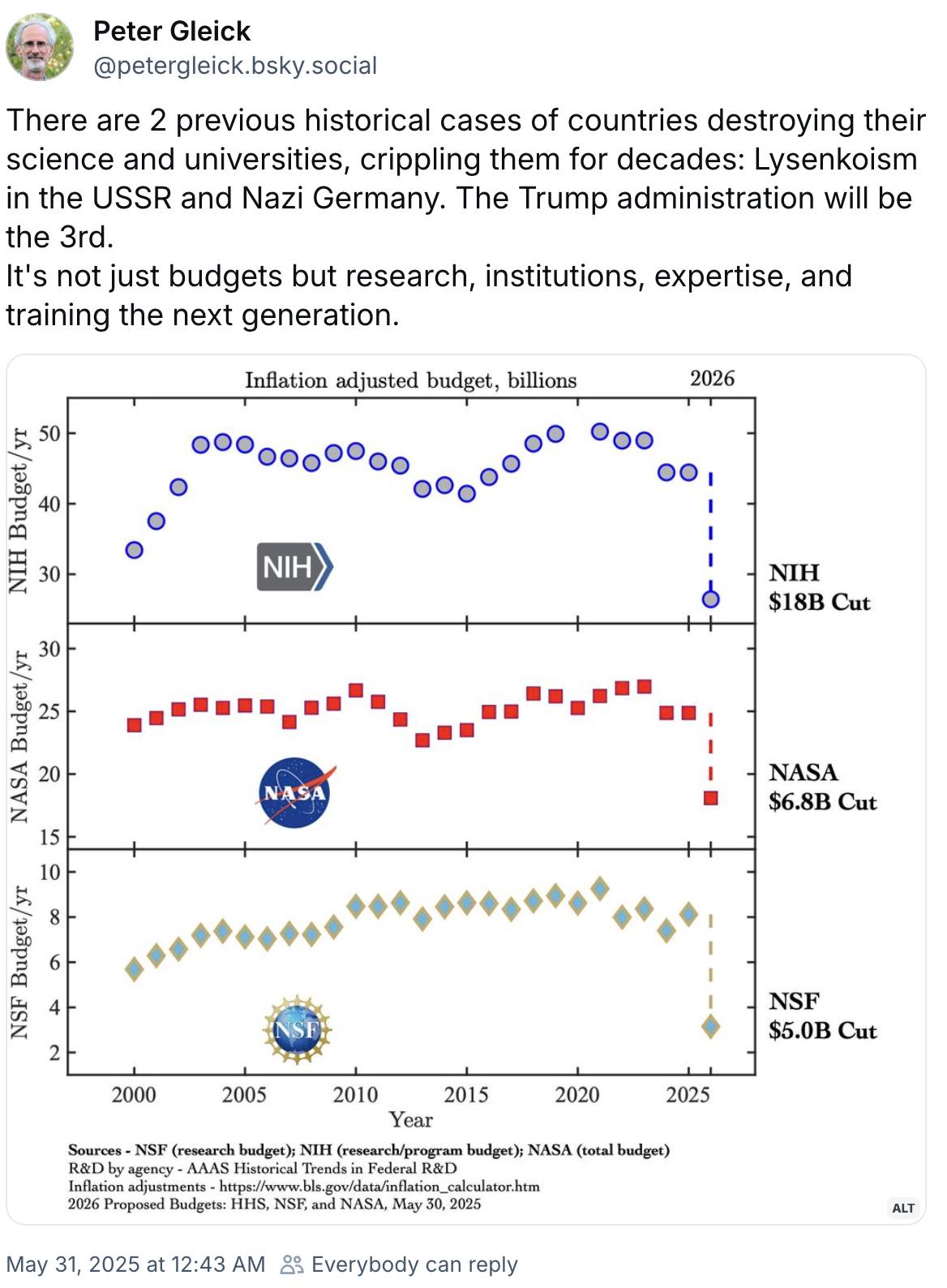
This list could be longer: China (esp. the Cultural revolution), Cambodia, and the massive purges across civil society and education in Turkey after that fake attempted “coup” several years ago — off the top of my head. Gleick’s point may be true (I think it is, of course), but it also combines the directionaless retrospection of the Sanatayana clichés with what I’ve started criticizing as “modelism.” Great, we have models — so what? What should be happening is the directly affected communities — scientists and adjacent workers involved in coordination, funding, publishing, supporting industries, etc, should be actively planning how to rebuild even better institutions. There’s no shortage of models for that, large and small: generation upon generation of scientific and techniocal societies, WW1-era standardization, WW2-era massive coordination (aviation, radar, optics, aerospace medicine are the ones I know a lot about), legends like Lockheed Martin’s skunkworks, the transnational scientific networks that enabled fields from meteorology to epidemiology, innovative entities like IAVI, ACT-UP and TAG, private-ish entities like Princeton’s IAS — the list goes on and on. Yes, Trump is doing incalculable damage, but the point of Sanatayana’s injunction shouldn’t be hand-wringing, it should be choosing the right lessons to learn from and then applying that learning. The scientific comunity is the longue-durée model for actively building rational, deliberate social and institutional structures with little or no regard for the comings and goings of politics. Now’s the time to shine.